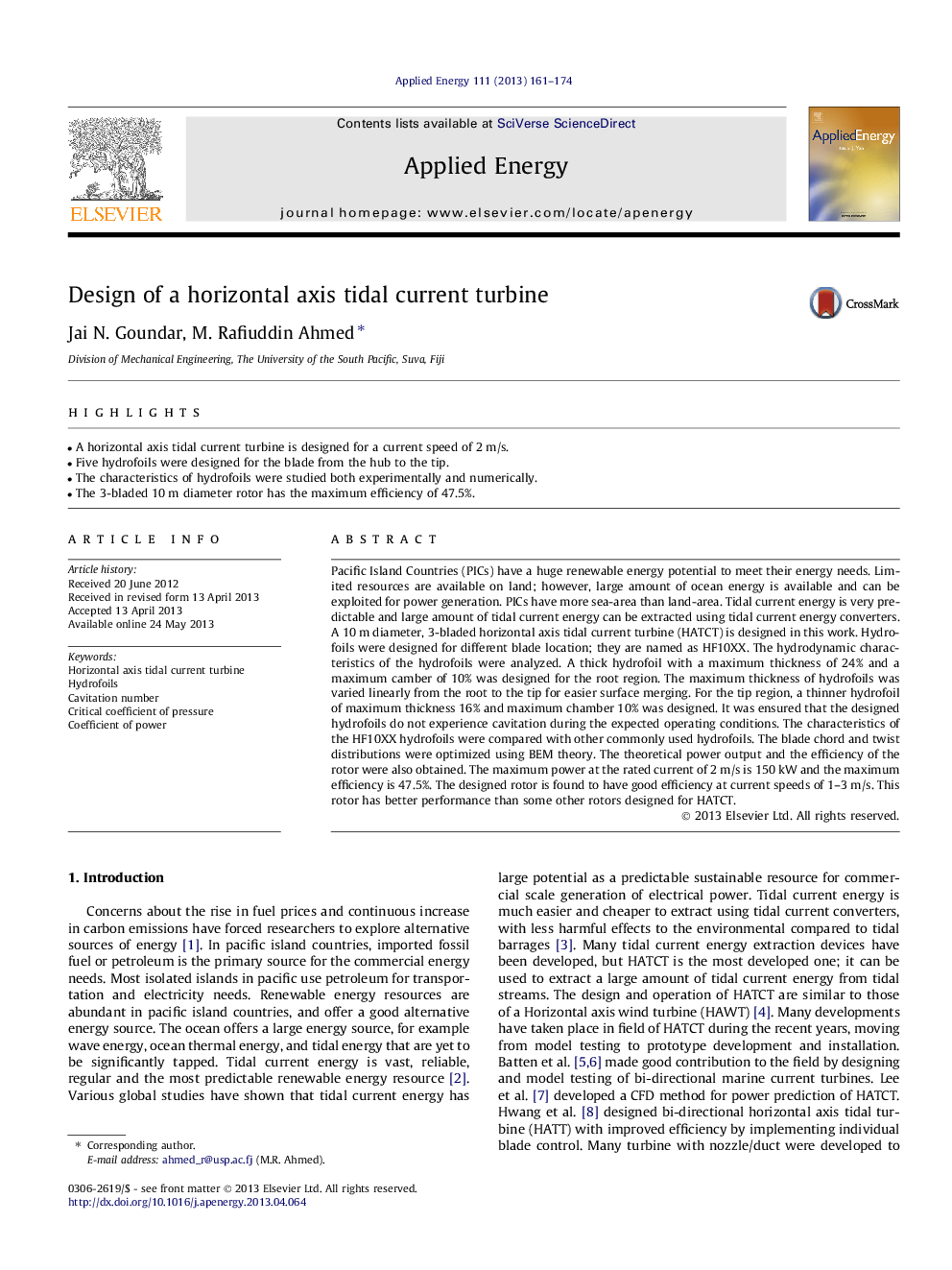| Article ID | Journal | Published Year | Pages | File Type |
|---|---|---|---|---|
| 6692188 | Applied Energy | 2013 | 14 Pages |
Abstract
Pacific Island Countries (PICs) have a huge renewable energy potential to meet their energy needs. Limited resources are available on land; however, large amount of ocean energy is available and can be exploited for power generation. PICs have more sea-area than land-area. Tidal current energy is very predictable and large amount of tidal current energy can be extracted using tidal current energy converters. A 10Â m diameter, 3-bladed horizontal axis tidal current turbine (HATCT) is designed in this work. Hydrofoils were designed for different blade location; they are named as HF10XX. The hydrodynamic characteristics of the hydrofoils were analyzed. A thick hydrofoil with a maximum thickness of 24% and a maximum camber of 10% was designed for the root region. The maximum thickness of hydrofoils was varied linearly from the root to the tip for easier surface merging. For the tip region, a thinner hydrofoil of maximum thickness 16% and maximum chamber 10% was designed. It was ensured that the designed hydrofoils do not experience cavitation during the expected operating conditions. The characteristics of the HF10XX hydrofoils were compared with other commonly used hydrofoils. The blade chord and twist distributions were optimized using BEM theory. The theoretical power output and the efficiency of the rotor were also obtained. The maximum power at the rated current of 2Â m/s is 150Â kW and the maximum efficiency is 47.5%. The designed rotor is found to have good efficiency at current speeds of 1-3Â m/s. This rotor has better performance than some other rotors designed for HATCT.
Related Topics
Physical Sciences and Engineering
Energy
Energy Engineering and Power Technology
Authors
Jai N. Goundar, M. Rafiuddin Ahmed,
